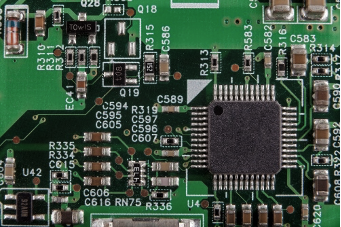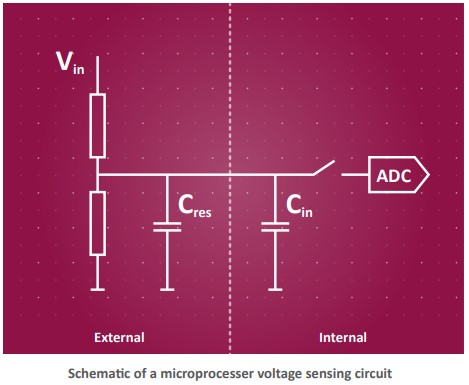
The 5 keys to maximising your battery life
The capability of smart devices and wireless products has evolved rapidly over the years, but the limits of battery technology often constrain their useful operating lifetime. Unlike some other technologies, where increasing capability tends to come as a matter of course, if more battery capacity is needed, you need to pay more, and most likely accommodate a bigger battery.
However, there are good ways to extend the useable life of battery-powered devices, by designing systems to use techniques to achieve this carefully. This article highlights our 5 design tips to help you maximise your battery life.
If you are currently undertaking a critical project and need assistance maximising your battery life, speak to one of our electronic specialists today.

Key 1: Duty cycle
The amount of activity (e.g., measuring, communicating) a device needs, is a key design issue. The first approach to minimising battery usage is to look closely at the required activity and minimise it. The duty cycle is the proportion of time that a device is actively doing something. Minimising the duty cycle minimises energy consumption. We can split this into two considerations: maximising sleep time and minimising awake time.
Sleep time
Whilst sleep time minimises activity, particularly the ability to receive a wireless message, the device still needs to be responsive when required by the user. Generally, devices will need to be able to communicate wirelessly at set periods to maintain contact. For some applications, this may not need to be as permanent as for an ‘on-call’ device. Therefore, it is vital to understand the specific needs of the application when this is designed.
Awake time
The important thing with awake time is to assess the processing that needs to be done by the device and design out using energy for things that are not doing anything useful (such as waiting for a response). With a wireless network, it is also key to identify what is needed for transmission time, as this will often be a large user of battery resources. Counterintuitively, it is often best to aim for high bit rate transmissions, to get transmission done rapidly so the device can go back into sleep mode.
Key 2: Micro-scheduling
Micro-scheduling is the careful design of the amount of activity, typically waiting for a response from a remote transmitter, a device will do. This technique helps minimise wasted on-time (with the corresponding power usage) and can offer substantial power savings.
Ideally, micro-scheduling will be hidden from users, a sub-system design element that should be as unobtrusive as possible. The best design is one that appears to offer ‘always on’ performance, but that reduces the amount of communication activity through smarter use of resources, such as sleep modes. One technique is to periodically and briefly check for the presence of a signal before attempting to respond to it, rather than waiting with a receiver permanently on. Micro-scheduling is already a standard feature in many battery-powered devices (such as smartphones and tablets) and can achieve significant power usage savings within wireless system design.
Key 3: Sleep current
A power-conservative wireless network will spend as much time in sleep mode as possible. If the sleep current dominates the average current drain in the system, then batteries last longer, whilst still enabling optimum system performance.
Being such an obvious energy-saving function, it is easy to see why an effective sleep current facility becomes an important factor when choosing the right devices for the design. This can be further extended by the use of low-power controllers to ensure the wake mode consumption is as low as possible.
Key 4: Low-power support circuits
It is important to take an overall view of the system design and to remember that all the key parts of a circuit could affect the drain of current from the battery. With a duty cycle in place, low-power support circuits can add additional power-saving benefits.
Using voltage regulators can offer energy-saving benefits by running microcontrollers near their lower supply voltage threshold. A voltage regulator’s ground current is a critical factor, which can vary by many micro-amps (µA) and can be sub-µA as well. Modern switched-mode regulators can also have impressive efficiencies at low supply currents and should be considered.
Another easily-implemented tip is using voltage sensing networks typically needed to measure battery voltage, as shown in the below diagram. When designing these, care is needed on the analogue-to-digital converter (ADC) inputs. A high resistor chain value is needed to limit the standing current, usually a few megaohms. It is important that the Cres value is greater than Cin to avoid a false low ADC reading (this can limit the bandwidth of the sensing to tens of Hz).

Key 5: Battery choice
Battery technology choice is critical. From a systems design point of view, there will commonly be a trade-off between the need for wireless devices to be small (and therefore have a small cell) and the ability to have a high current pulse to support a wireless transmission (which tends toward larger cells).
It is also important to understand battery characteristics. When it comes to capacity, fairly straightforward sums are involved. For example, a 1Ah (Amp hour) battery will supply 1mA for 1000 hours (41 days), or 1uA for 1 million hours (114 years). However, you should be aware that shelf-life, current pulse size and self-discharge issues often limit a modern battery to a maximum 10–20-year life.
Small calls and a high-power current pulse tend to not work well together. Complex transceiver ICs in particular can demand pulses of current, which can adversely affect capacity. For example, a 2.4GHz 802.15.4 transceiver can take 16mA or more to receive or transmit. In this case, small alkaline batteries are better at providing pulses than coin-cell lithium ones. A possible solution is to use reservoir storage, such as capacitors and super-capacitors, to reduce pulse current amplitude, but adding these normally does not help keep size small.
The recipe
In practice, the best way to achieve battery power savings is to find the best blend of several, or all of these key approaches. Finding power savings across the board will enable wireless systems to provide the required performance with often a surprisingly long battery life.
Using key techniques such as low duty cycle, micro-scheduling, sleep currents, low-power support circuits and the right battery can all help to greatly extend the usable period of a battery. More importantly, a combination of two or more of these can offer remarkable increases in performance, when intelligently applied.
Having had many years of experience helping clients make the most of their battery-dependent systems, reach out to one of our wireless system designers today to talk through your current needs, wherever you are on the product development cycle.



